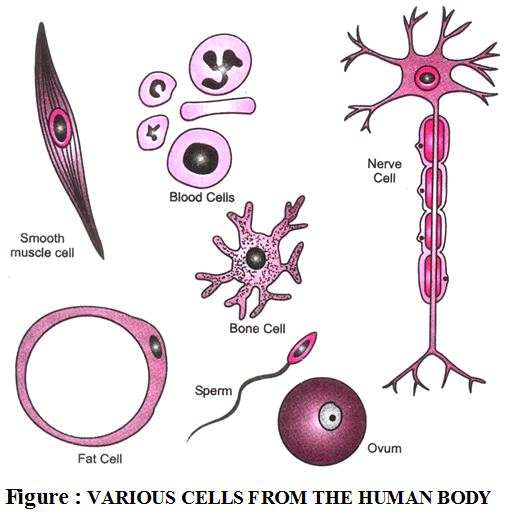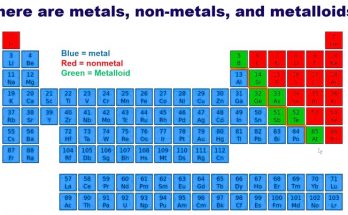Shape and size of cell
Cells come in multitude of shapes and sizes. The shape of a cell depends on the job it performs.

Examples of Cells with their shape and function
- Skin cells—Flat— They are protective cover of the body the flat shape helps them to cover a large area.
- Muscle cells— Elongated and thin– Muscle cells expand and contract,there long and thin shape help them to do this.
- Nerve cells— Very long fibrous – Nerve cells have fiber that may be more than one meter long. Messages are passed from one nerve cell to another along this fiber.
- White blood cells— Disc shaped– but can change their shape— WBC in blood changes their shape to destroy germs.
- Amoeba— Unicellular organism with no definite shape, it’s pseudopodia helps it to move and feed.
- Plant cells—May be rectangular , round, oval or elongated depending upon their functions. Plant cell located on the outer part of the stem give strength to the plant. This cells have thick cell walls for support. Plants have some cells which Store food, these cells are larger than other cells.
Also Check –Unicellular And Multicellular Organisms
Cauleroa taxifolia is the world’s largest single celled organism an aquatic algae. It is found in January 29 2015. It is a single cell that can grow to a length of 6 to 12 inches.
Ostrich egg measuring 170 millimeter * 130 mm is the single largest cell.
The smallest cell in human body are RBC red blood cell.
The smallest cell is a parasitic bacterium called Mycoplasma gallisepticum .

2 Comments on “Shape and size of cell–Cell Structure and functions Class 8 NCERT Notes”